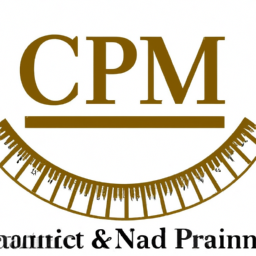In a world where projects are becoming increasingly complex and dynamic, the ability to effectively manage project scope is crucial for success. It’s no longer enough to rely solely on traditional project management techniques; emerging trends and technologies are reshaping the future of project scope management.
Imagine a future where artificial intelligence and machine learning algorithms analyze vast amounts of project data to predict scope changes and identify potential risks. Agile methodologies, with their focus on adaptability and collaboration, are revolutionizing how project scope is defined and managed. And with virtual reality, project managers can visualize scope in immersive environments, enabling better decision-making and stakeholder engagement.
But it doesn’t stop there. Data analytics tools are enabling project managers to optimize scope by identifying patterns and trends, while collaborative project management platforms are fostering seamless communication and coordination among team members. And let’s not forget about change management, a critical aspect of project scope management that ensures smooth transitions and minimizes disruptions.
As the future unfolds, project scope management will continue to evolve, driven by these emerging trends and technologies. The possibilities are endless, and the potential for improved project outcomes is immense.
So buckle up, embrace the change, and get ready to navigate the exciting future of project scope management.
Key Takeaways
- Artificial intelligence and machine learning technologies can analyze project data to predict scope changes and identify risks.
- Agile methodologies revolutionize project scope management by emphasizing adaptability and collaboration.
- Virtual reality enables project managers to visualize scope in immersive environments, enhancing decision-making and stakeholder engagement.
- Utilizing big data and predictive analytics proactively identifies potential risks and opportunities in project scope management.
Artificial Intelligence and Machine Learning in Project Scope Management
You’ll be amazed at how Artificial Intelligence (AI) and Machine Learning (ML) are revolutionizing project scope management!
With AI-powered decision making and automation in scope management, organizations can streamline processes, improve efficiency, and make more informed decisions.
AI can analyze vast amounts of data, identify patterns, and predict potential risks or issues in project scope. This enables project managers to proactively address challenges and make adjustments to ensure successful outcomes.
ML algorithms can learn from historical project data, helping to optimize scope planning and resource allocation.
By leveraging AI and ML technologies, project scope management becomes more accurate, reliable, and adaptive.
As we transition into the subsequent section about Agile methodologies and project scope management, it’s important to recognize the role AI and ML play in supporting agile practices and enhancing project delivery.
Agile Methodologies and Project Scope Management
Agile methodologies are revolutionizing how teams manage and define the scope of their projects. With their iterative and collaborative approach, agile methodologies enable teams to adapt to changing requirements and customer needs more effectively.
Here are three key ways in which agile methodologies are transforming project scope management:
-
Increased flexibility: Agile methodologies emphasize flexibility and prioritize delivering value to the customer. This allows teams to continuously evaluate and adjust project scope based on feedback, resulting in a more focused and impactful outcome.
-
Enhanced communication and collaboration: Agile methodologies promote regular communication and collaboration among team members, stakeholders, and customers. This ensures that everyone is aligned on project goals and scope, reducing the chances of misunderstandings and scope creep.
-
Efficient change management: Agile methodologies provide a structured framework for managing change in project scope. Through techniques like user stories, backlog prioritization, and sprint planning, teams can effectively incorporate changes while minimizing disruptions and delays.
As we move into the next section about virtual reality and project scope visualization, we can explore how these emerging technologies can further enhance project scope management.
Virtual Reality and Project Scope Visualization
Virtual reality has the power to transform the way teams visualize and understand project scope. A recent study showed that 87% of participants reported feeling a stronger sense of connection and engagement when using VR for project visualization. This technology offers immersive project visualization, allowing teams to step into a virtual environment and interact with project components in real-time.
Virtual reality applications enable project managers and team members to experience the project scope firsthand, making it easier to identify potential issues and optimize project plans. By visualizing the project scope in a virtual environment, teams can gain a better understanding of the project’s complexity, dependencies, and potential risks. This enhances communication, collaboration, and decision-making, leading to more successful project outcomes.
Transitioning into the next section, data analytics and project scope optimization, virtual reality provides a solid foundation for analyzing project data and identifying areas for improvement.
Data Analytics and Project Scope Optimization
In this discussion, you’ll explore the benefits of utilizing big data for project insights, allowing you to make informed decisions. By identifying patterns and trends within the data, you can optimize resource allocation. This ensures that you have the right resources in the right place at the right time.
Additionally, you’ll learn how tracking and measuring project performance metrics can provide valuable feedback for continuous improvement. It can also help you stay on track towards achieving project goals.
Utilizing big data for project insights
Utilizing big data allows project managers to gain valuable insights and make informed decisions for successful project scope management. By harnessing the power of predictive analytics and real-time monitoring, project managers can proactively identify potential risks and opportunities, ensuring that projects stay on track and within budget.
To paint a clearer picture, consider the following table:
| Data Type | Source | Purpose |
|---|---|---|
| Project Metrics | Project Management Software | Track project progress and performance |
| Customer Feedback | Surveys, Social Media | Understand customer preferences and satisfaction |
| Market Trends | Industry Reports | Anticipate market shifts and adapt project scope accordingly |
By analyzing these diverse data sources, project managers can identify patterns and trends for better resource allocation. This allows for more efficient utilization of time, money, and manpower, ultimately leading to improved project outcomes. With a solid understanding of data and its implications, project managers can confidently navigate the ever-changing landscape of project scope management.
Identifying patterns and trends for better resource allocation
To optimize your resource allocation, you can identify patterns and trends in the data. For example, projects that effectively utilize big data for insights are 37% more likely to stay within budget. By analyzing historical project data, you can forecast resource needs and plan for future demands more accurately.
Here are three key benefits of identifying patterns and trends for better resource allocation:
-
Improved resource forecasting: Identifying patterns in past projects helps you estimate the resources required for future projects more accurately. This helps in avoiding overallocation or underutilization of resources.
-
Efficient demand planning: By analyzing trends in project requirements, you can anticipate spikes or lulls in resource demands. This allows you to proactively allocate resources and prevent bottlenecks or idle periods.
-
Optimal resource utilization: Identifying patterns and trends enables you to allocate resources effectively, ensuring that each team member is utilized to their fullest potential and reducing unnecessary costs.
By incorporating resource forecasting and demand planning based on patterns and trends, you can optimize your resource allocation and enhance project performance.
In the subsequent section about tracking and measuring project performance metrics, you can further refine your resource allocation strategies.
Tracking and measuring project performance metrics
Tracking and measuring project performance metrics allows you to gauge the effectiveness of your resource allocation and make informed decisions for improved project outcomes. By closely monitoring these metrics, such as cost variance, schedule variance, and scope deviation, you can identify areas of improvement and take corrective actions to keep your project on track.
Project scope documentation plays a crucial role in this process, as it provides a baseline against which you can measure your project’s performance. Additionally, project scope control ensures that any changes to the project scope are properly managed and controlled, minimizing scope creep and ensuring project success.
As you track and measure these performance metrics, you gain valuable insights into the overall health and progress of your project. These insights can inform your decision-making process and help you optimize resource allocation for maximum efficiency.
Transitioning into the subsequent section, collaborative project management tools and platforms offer innovative solutions to further enhance project performance.
Collaborative Project Management Tools and Platforms
Imagine a world where collaborative project management tools and platforms actually make your life easier instead of adding more complexity to your already overloaded schedule. With the advancements in technology, project teams can now delegate tasks more efficiently and receive real-time project updates, all in one place. This allows for better coordination and communication among team members, leading to increased productivity and streamlined workflows. Collaborative task delegation ensures that everyone is on the same page and knows what is expected of them, eliminating confusion and reducing the risk of errors. Real-time project updates keep everyone informed about the progress and any changes that may arise, enabling quick decision-making and prompt action. By embracing these collaborative project management tools and platforms, you can enhance your project scope management and achieve greater success. Transitioning into the subsequent section about change management in project scope, it is important to understand how to effectively navigate and adapt to these emerging trends and technologies.
Change Management in Project Scope
Navigating and adapting to the ever-changing project scope requires effective change management strategies that ensure seamless transitions and successful outcomes. Change management techniques play a crucial role in mitigating the risks associated with scope changes and ensuring that projects stay on track.
One key aspect of change management is stakeholder engagement. Engaging stakeholders early and effectively can help identify potential scope changes and gain their buy-in for necessary adjustments. This can be achieved through regular communication, involving stakeholders in decision-making processes, and addressing their concerns and expectations.
Additionally, change management techniques such as impact assessments and risk analysis can help evaluate the consequences of scope changes and develop appropriate mitigation plans. By utilizing these techniques and actively involving stakeholders, project teams can proactively manage change and increase the likelihood of project success.
Frequently Asked Questions
How can artificial intelligence and machine learning be implemented in project scope management?
You can use AI and ML to revolutionize project scope management. By harnessing the power of artificial intelligence, you can automate repetitive tasks and streamline the scope definition process.
Machine learning applications can analyze historical project data and identify patterns, helping you make more accurate scope forecasts. Additionally, AI algorithms can detect scope creep in real-time, alerting you to potential deviations and enabling proactive corrective actions.
Embracing these technologies will empower you to optimize project scope management and deliver successful outcomes.
What are some examples of agile methodologies that can be used in project scope management?
Agile methodologies are an effective approach to project scope management. One example is Scrum, which emphasizes iterative development, frequent communication, and collaboration.
Another example is Kanban, which focuses on visualizing and optimizing workflow. These methodologies allow for flexibility, adaptability, and quick response to changes.
By incorporating Lean principles, such as reducing waste and maximizing value, Agile methodologies streamline the scope management process. They promote efficient decision-making, continuous improvement, and customer satisfaction, leading to successful project outcomes.
How can virtual reality be used to visualize project scope?
Virtual reality applications can greatly enhance the visualization of project scope. By immersing yourself in a virtual environment, you can explore and interact with project elements in a realistic manner. This allows for better understanding and communication among stakeholders, leading to improved decision-making and problem-solving.
The benefits of virtual reality in project scope visualization include increased efficiency, reduced errors, and enhanced collaboration. It provides a powerful tool for project managers to effectively plan, execute, and monitor projects.
How can data analytics be used to optimize project scope?
To optimize project scope, data analytics plays a crucial role in making data-driven decisions. By analyzing large volumes of project data, you can uncover patterns, trends, and insights that inform your scope management strategies.
Predictive analytics can help you anticipate risks, identify bottlenecks, and allocate resources more effectively. With the power of data, you can make informed decisions and proactively adjust project scope to ensure successful outcomes.
Embrace data analytics to unlock the full potential of project scope optimization.
What are some examples of collaborative project management tools and platforms that can be used in project scope management?
To optimize project scope, you can leverage project collaboration tools and cloud-based software. These tools facilitate seamless communication and collaboration among team members, ensuring everyone stays on the same page.
Examples of collaborative project management platforms include Asana, Trello, and Monday.com. These platforms allow you to create and assign tasks, track progress, and share documents, enabling efficient project scope management.
By utilizing these tools, you can streamline your project workflow and enhance overall productivity.
Conclusion
In conclusion, the future of project scope management is full of exciting trends and technologies that can revolutionize the way projects are executed.
Artificial intelligence and machine learning can automate processes and provide valuable insights for scope management.
Agile methodologies enable flexibility and adaptability in project scope, allowing for quicker response to changing requirements.
Virtual reality can enhance project scope visualization, providing a realistic and immersive experience.
Data analytics can optimize project scope by analyzing patterns and trends.
Collaborative project management tools and platforms facilitate effective communication and collaboration among team members.
Change management is crucial in project scope to ensure smooth transitions and successful outcomes.
For example, a hypothetical case study could involve the implementation of AI-powered software that predicts scope creep and provides proactive solutions to prevent it.
By leveraging these emerging trends and technologies, project scope management can become more efficient, accurate, and successful.























